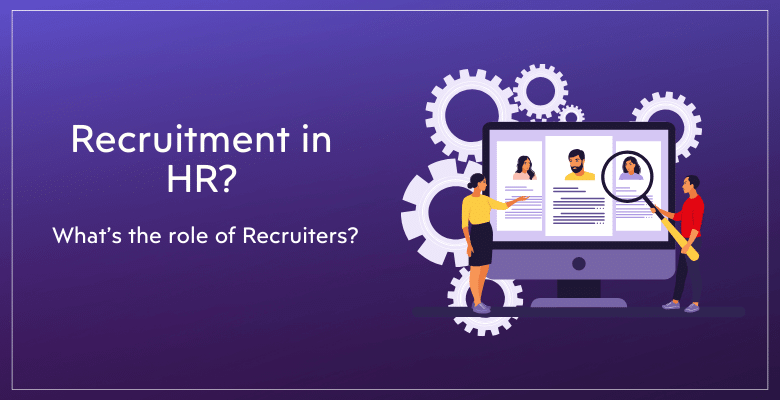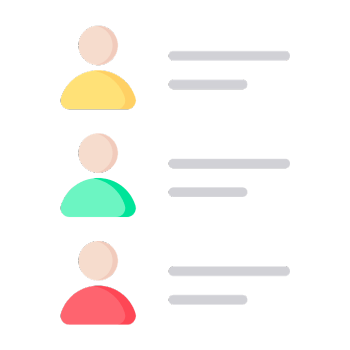
What’s Recruitment in HR? Definition and Tips for an Effective Recruit Process
Hiring is one of the main functions of human resources departments. So in this article, we will try to discover the HR recruitment topics with definitions, process steps and tips.
Table Of Content
1. What is recruitment in HR?
2. What is the role of HR in recruitment?
3. What does the HR recruiter do?s
4. Recruitment Types in HR
5. Hiring Process in HR
6. Five Tips for an Effective Recruitment in HR
7. Recruitment Tracker for HR
8. Conclusion
As businesses change and workforce needs become more complex, HR’s role in recruitment has expanded. HR professionals now use new strategies, technologies, and methodologies to meet these challenges. And this article explores the multifaceted domain of HR recruitment, including including the integration of cloud communication platforms to streamline the recruitment process. ![]()
1. What is recruitment in HR?
Recruitment in HR is a crucial process that involves attracting, screening, selecting, and onboarding qualified candidates for a job.
The goal of recruitment is to find the right person for the job at the right time.

So an effective recruitment practices attract top talent in a competitive job market. Finally, a proficiently executed recruitment process can improve employee satisfaction and retention by ensuring a good match between the candidate’s abilities and aspirations and the job’s requirements and rewards.
2. What is the role of HR in recruitment?
Definitely, HR plays a very significant role in recruitment. Because the blending strategic planning with operational execution to attract, evaluate, and onboard suitable candidates for the organization is mostly HR’s responsibility.
This responsibility extends beyond filling vacancies and includes shaping the workforce to meet current and future challenges, fostering a positive organizational culture, and contributing to the overall strategic objectives of the business.
So, here are the key roles HR plays in the recruitment process:
Strategic Workforce Planning:
Firstly, the HR professionals should make a detailed strategic workforce plan according to the needs of the organization. This will both assess the current talent and forecast future needs.
Job Design and Role Definition:
Secondly, HR plays a critical role in recruitment by defining the roles and responsibilities of positions to be filled. This involves creating job descriptions to reflect the required skills, experience, and qualifications. By doing so, candidates can gain a clear understanding of what the job entails and what will be expected of them.

Attract Suitable Candidates:
Also, HR should find the best ways for the company to attract the right people for the organization. HR professionals use various advertisement channels, such as job boards, social media, professional networking sites, and/or industry events. They also leverage employee referrals and recruitment agencies.
Screening in HR Recruitment:
Additionally, HR professionals manage the screening process, which includes:
- Reviewing applications
- Conducting initial interviews
- Shortlisting candidates
Finalizing the Hiring Process:
After a candidate is selected, HR handles job offer negotiations, ensuring that the terms are competitive and in line with industry standards.
Finally, HR plans and monitors the onboarding process to introduce the new hires to the company culture, policies, and procedures.
*PRO TIP: HR also ensures that the recruitment process complies with all legal requirements and ethical standards, including non-discrimination, privacy, and fair employment practices. This ensures that the organization avoids legal risks and maintains its reputation as a fair and responsible employer.
In summary, HR is the main manager of the whole recruitment process.
3. What does the HR Recruiter do?
For sure, recruiters has a critical role in talent acquisition process. But let’s list the main responsibilities of a recruiter:
- Create comprehensive recruitment plans tailored to each vacancy
- Ensure right sourcing channels to reach potential candidates, which may include job boards, social media platforms, recruitment agencies, and professional networking events
- Actively search for candidates using various methods, such as direct sourcing through LinkedIn and other professional networks, engaging with passive candidates, and managing employee referral programs
- Review applications and resumes
- Coordinate the interview process, which may involve multiple rounds with different members of the organization
- Work closely with hiring managers to evaluate candidates post-interview.
- Manage the offer negotiation process
- Plan the onboarding sessions for the new hires
- Develop and promote the employer brand
- Conduct market research and analysis
- Ensure compliance with legal and regulatory requirements
So, it’s all about managing and monitoring the whole hiring process.

4. Recruitment Types in HR
There are mainly two types of recruitment:
- Internal Recruitment
- External Recruitment
The primary recruitment types employed in HR include Internal Recruitment, which involves filling vacancies with current employees from within the organization. Methods for filling job vacancies include promotions, transfers, or internal postings. Internal recruitment helps to retain top talent, enhance employee morale, and reduce onboarding time and costs.
On the other hand, the External Recruitment is used when the required talent or specific skills are not available within the organization.
So, the external recruitment methods include job advertisements, campus recruitments, job fairs, and using recruitment agencies. This type broadens the talent pool and brings in fresh perspectives.
Other Recruitment Types
Beside this main categorization, there are also other specific types of recruitment:
- Passive Recruitment: That targets individuals who possess the desired skills and experience but are not actively looking for a new job.
- Active Recruitment: This method targets candidates who are actively seeking employment opportunities.
- Referral Recruitment: It encourages staff to recommend suitable candidates for open positions.
- Digital Recruitment: This includes the use of online job boards, company career sites, social media platforms, and even mobile apps to attract candidates.
- Campus Recruitment: This is also a common practice, targeting recent graduates or students for internship and entry-level positions, campus recruitment involves visiting universities and colleges to attract young talent.
Each recruitment type has its own advantages and challenges. And, an effective HR recruitment strategy often uses a mix of these types to create a diversified approach to talent acquisition.
In summary, the recruitment in HR varies widely based on organizational needs, the nature of the job, and the target candidate pool. HR professionals can tailor their approach effectively by understanding the different types of recruitment.
5. Hiring Process in HR
A typical hiring process involves several key stages, starting from understanding the need to the onboarding of the new hire.
Now, let’s see the recruitment process in steps:
#Step1 – Identifying the need: This need may arise from new positions being created, existing positions becoming vacant, or the need for additional skills in a team.
#Step2 – Creating a Job Description: The job description should include the role’s responsibilities, qualifications, skills, and experience.
#Step3 – Sourcing Candidates: Once a job description is created, the HR should promote this post and creates a candidate database from the applications.
#Step4 – Screening Applications: Now, the recruiter will screen the applications and shortlist the best candidates. This involves reviewing resumes, cover letters, and portfolios.

#Step5 – Conducting Interviews: Then the shortlisted candidates are invited for interviews in various formats, including one-on-one, panel, or video interviews.
#Step6 – Assessment: In this step, the recruiter and the responsible manager will evaluate the capabilities of the candidates.
#Step7 – Reference Checks: Also, the employer may conduct reference checks before making a final decision to verify the candidate’s employment history, qualifications, and character.
#Step8 – Making the Offer: Once a candidate is selected, the employer makes an offer. Thus, this offer should detail the terms of employment, including salary, benefits, and other conditions.
#Step9 – Contracting and Onboarding: After the offer is accepted and the sides sign the labor contract, the onboarding process begins, aiming to integrate the new hire into the organization smoothly.

6. Five Tips for an Effective Recruitment in HR
As we have covered in the previous sections, HR recruitment involves many critical steps and it’s important to pursue a smooth hiring plan. So we have gathered some of the tips and best practices for recruiters:
TIP 1: Define Clear Job Descriptions
Begin with clear, concise job descriptions that accurately reflect the responsibilities, qualifications, and skills required for the role.
TIP 2: Utilize a Variety of Recruitment Channels
Don’t rely solely on traditional job postings. Expand your reach by utilizing digital platforms, social media, professional networks, and employee referrals to source candidates.
TIP 3: Implement an Applicant Tracking System
An Applicant Tracking Syestem (ATS) can streamline the recruitment process by organizing candidate data, filtering applications based on specific criteria, and improving overall efficiency.
TIP 4: Focus on Employer Branding
A strong employer brand can significantly attract top talent. Showcase your company culture, values, and what makes it a great place to work through your website, social media.
TIP 5: Conduct Structured Interview
Structured interviews, where each candidate is asked the same set of questions, can help reduce bias and ensure a fair evaluation process. This approach also allows for better comparison between candidates.
Besides those tips, you should be always sure to offer competitive compensation packages by benchmarking against industry standards. Here also consider non-monetary benefits, such as flexible working conditions, career development opportunities, and health and wellness programs.
7. Recruitment Tracker for HR
As you see the HR Recruitment is a long and continuous process with many aspects. So we have created a unique tool to monitor all your hiring efforts.
>> Download Recruitment Tracker Excel Template
This tool has four main sections:
- Setting: Configure your template according to your needs
- Vacancies: List your all open positions
- Candidates: Build you candidate database
- Dashboard: Track the recruitment analytics in this panel
>> Download Recruitment Tracker Excel Template
You will be able to monitor all selection phase from the colored lists. This tool is:
- Available in Excel and Google Sheets
- Ready-to-download
- No installation needed
Here’s short video to simply explain this tool works:
If you’re looking for an online tool, you can download our Recruitment Tracker Google Sheets Template to monitor your hiring steps.
8. Conclusion
Definitely, recruitment is one of the most crucial functions of human resources. HR professionals play a vital role in shaping the future of their organizations by understanding the various types of recruitment and navigating the intricacies of the hiring process.
With applicant tracking systems and recruitment trackers, you can help and improve your hiring process with better monitoring and reporting.
For success in your company, you need qualified workforce and a qualified workforce begins with effective hiring. So hope you have learned the tips for an improved HR recruitment.
Recommended Readings:
How to Create an Org Chart in Excel?



